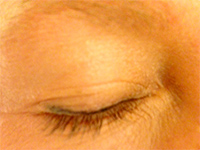 Cosmetic tattooing, also referred to as permanent cosmetics, dermapigmentation and micropigmentation, is becoming a popular choice for men and women for medical and aesthetic reasons. Body art tattooing is centuries old and the origins of cosmetic tattooing can be traced back to the beginning of the 20th century, with many believing that it dates back even further. Today, cosmetic tattooing is a fast-growing part of the beauty industry and is regulated by the Department of Health and State Boards of Cosmetology.
Cosmetic tattooing, also referred to as permanent cosmetics, dermapigmentation and micropigmentation, is becoming a popular choice for men and women for medical and aesthetic reasons. Body art tattooing is centuries old and the origins of cosmetic tattooing can be traced back to the beginning of the 20th century, with many believing that it dates back even further. Today, cosmetic tattooing is a fast-growing part of the beauty industry and is regulated by the Department of Health and State Boards of Cosmetology.
Cosmetic tattooing has a number of applications. Procedures can fill in faint, partial or non-existent eyebrows. Lip tattooing can define your lip line and help reduce lipstick bleed and colored tattoos act like permanent lipstick and help lip scars disappear. Eyeliner tattoos eliminate the need for eyeliner pencils. More than just a permanent makeup solution, cosmetic tattooing has also become a widely accepted option for other sorts of augmentation. The procedure has been used to improve the appearance of nipples after breast reconstruction surgery and to camouflage birth marks, scars and hair loss from all forms of alopecia and cancer treatments.
The process of getting a cosmetic tattoo is like getting any tattoo: a hollow, vibrating needle penetrates the top layer of the skin and a pigment is released. Before getting a cosmetic tattoo, a patch test should be given to determine if you have an allergy to the pigment. You will be given color choice suggestions and once you decide, a sterile surgical pen is used to sketch the area that will be tattooed. After the tattoo is applied, it will look dark and shiny and tissue surrounding the site will be red and swollen. Cold compresses can be used to reduce swelling and antibiotic ointments can help prevent infection. After three weeks, the color should fade to the permanent shade.
